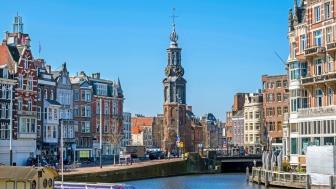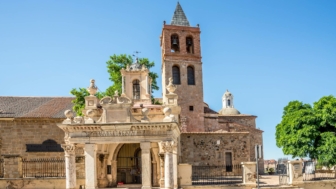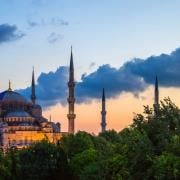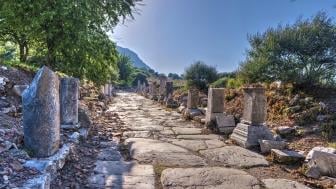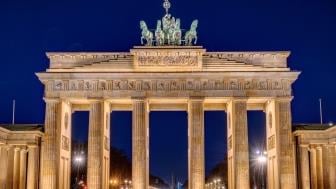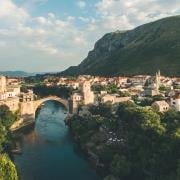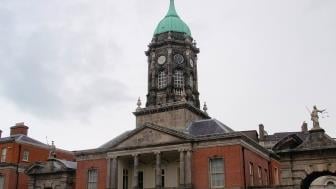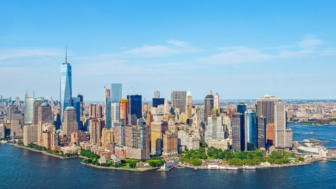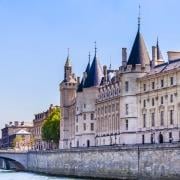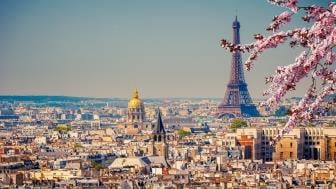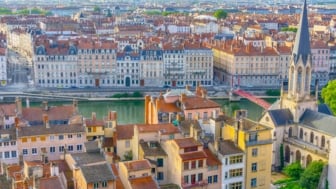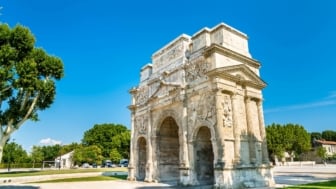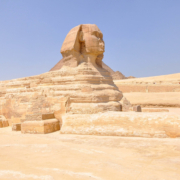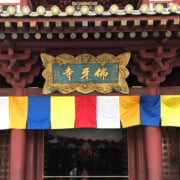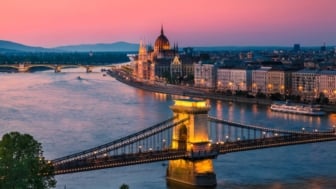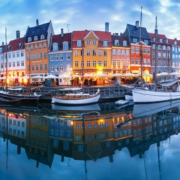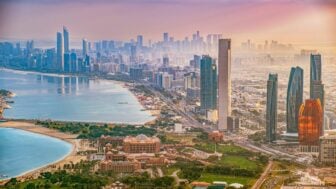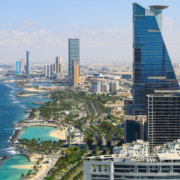Lasithi, one of the most magical places on the island of Crete, is well- known for the enchanting waters that paint its beaches, it’s steep but at the same time beautiful mountains and its secluded places that charm any visitor along the way.
Situated in a more secluded place than the other prefectures of Crete, Lasithi offers a calmer stay away from the tourist crowds. This guide to Lasithi is all you need for your visit to eastern Crete.
Unmissable sites in Lasithi
The Lake Voulismeni
Located in the center of the city, Lake Voulismeni is an integral part of the walk we’ll do in the city as it is connected to the port of Agios Nikolaos with various shops and cafes adorning its perimeter. An ideal place to start our walk with food or drink, enjoying this nice atmosphere. At the edge of the harbor, the beautiful historical statue of the rapture of Europe, the work of the famous Greek director and screenwriter, Nikos Koundouros captures every passersby’s attention. Nearby, among the trees and the rocks, stands the cute Church of Voulismeni or as the locals call it, the “Church of the Fishermen”. A small but shiny jewel that sparkles in the heart of the city.
The Church of Agios Nikolaos
During your tour, it would be a great omission not to visit the Early Byzantine Church of Agios Nikolaos, the place the city got its name from. Built around the 7th century and during the Iconoclasm, the historic church is decorated with two layers of drawings and then murals. Despite its small size, the temple attracts numerous tourists of all types and captivates them with its warm atmosphere and postcard picturesqueness.
Spinalonga
Spinalonga (ancient name for is Kalydon), is located north of the gulf of Elounda. It is known to many from the famous novel by Victoria Hislop “The Island”, and the operation of the islet as a leprosarium from 1903 to 1957. Keep in mind that you can only get here by boat that departs from the ports of Agios Nikolaos, Plaka and Elounda.
The landscape’s wild beauty in combination with the majesty of the Venetian fortress assures that you won’t forget what happened behind these walls and the suffering of the people who lived inside them.

Amazonas, Animal Park
For young and old animal lovers, this zoo is a stop not to be missed! Located in Kourounes, the area hosts many species of small and large animals (macaques, parrots, monkeys) in an exotic and well-groomed environment. Visitors can also see and feed with the help of guides small animals such as lemurs.
Holy Monastery of Toplou in Sitia
Built in the 14th century, this awe-inspiring monastery, reminiscent of a fortress, is located on the road to Sitia and is an epitome of excellent architecture. Here the entrance is free and you’ll find a small museum with collections and objects of the place. Moreover, the Monastery has its own winery, in which wine lovers can taste various wines and other products produced by the monks, such as oil and raki, a traditional Greek drink.
Beaches to visit near Lasithi
The Palm Forest of Vai
Since we are in Sitia, let us take you to the exotic, full of palm trees beach in Vai. Located east of Agios Nikolaos, every summer the sandy beach is packed with tourists and locals. A few minutes from here lies Psili Ammos, an unorganized small beach ideal for those eager to enjoy their swim away from the crowds.
Voulisma Beach (Istros)
In the bay of Istros, east of Agios Nikolaos, we find one of the most famous and well-organized beaches of Crete. Famous for its clear blue waters and white sandy beach, this beach is bound to offer visitors the rejuvenation and tranquility we are looking for from a quiet beach.
Gaidouronisi” or “Chrysi” island
South of Ierapetra, you’ll find many boats that will take you to Gaidouronisi or as it is also known as Chrysi island. Here we can bathe enjoying the shell-filled sandy beach and the cool air. Make sure to come prepared with food and snacks to avoid unnecessary expenses and hassle. In any case, the incredible waters of this small islet will definitely reward you at the end.
Agia Fotia Beach
Another alternative beach is the beach of Agia Fotia. Its homonymous village is located 8 kilometers east of Ierapetra. The combination of peace and comfort due to the organization of the beach has made this resort one of the most popular attractions luring numerous tourists every summer. Nevertheless, it remains an excellent choice for swimming and relaxation but if you want to avoid the crowds then make sure to head here early in the morning.

Kato Zakros beach
Famous for its turquoise -protected from the winds- waters, the beach of Kato Zakros, is located in the east of Crete, north of Xerokampos. What makes this beach stand out is that it is located within walking distance of one of the most important Minoan palaces built in 1900 BC. Once you finish your tour around the place, make sure to pass by the village of Zakros for a traditional Cretan delicacy.

Things to do in Lasithi
From folklore and ancient history to Byzantine churches, Lasithi is full of archeological sites and museums. Being the place where the Minoan civilization was born and flourished, Crete brims with archeological museums that feature objects and findings of invaluable cultural and historical value.
Some of them are the archeological museums of Agios Nikolaos, Ierapetra, Sitia. For another trip to the ancient years of Crete, archeological sites exist in Zakros, Lato, Hamezi, Vasiliki and Gournies in Pachia Ammos.
The museum of Agios Georgios
The museum of Agios Georgios in the Lasithi Plateau consists of four different sections, the Cretan Folklore Museum, the Neoclassical Museum, the Ecclesiastical Museum and the museum of Eleftherios Venizelos. The complex of these buildings gives travelers the opportunity to dedicate one day and absorb as much information as possible about the history of the place and the life of Eleftherios Venizelos, one of the most popular former Prime Ministers of Greece.
The Cretan Olive Oil Farm
If you want to take a glimpse in locals’ nutritional habits visit the farm hosted by the Cretan Olive Oil Farm Museum. The farm is synonymous with tradition and the process of olive production. Certainly the traditional and Cretan products highlight this folklore museum in a living image of the past.
Lasithi Plateau
We could not think of a better way to discover Lasithi than hiking. Its lush mountains are bound to enchant you and the best way to admire their beauty is from up close.
The Lasithi Plateau not only has an incomparable view that takes your breath away, but it is also one of the first wind farms in Europe. The slopes of many mountains of the plateau are lined with small and large picturesque windmills, making the plateau a top destination for families and people of all ages.

Cold of Psychrou (Mount Dikteo)
The Lasithi plateau, apart from the beauty of the wild nature, is accompanied by the famous myth that wants Dikti (which is located on the plateau) to be the birthplace of the god Zeus. According to legend, Saturn, fearing his father’s prophecy that one of his children would dethrone him, swallowed them. As soon as Rhea became pregnant with Zeus, she gave birth to him secretly from Saturn and hid him in a cave that was probably on the mountain of Dikteos Cave. Clio Muse tours dived in Psychro Cave to learn about the birth of Zeus and we created a tour about it.
This is only one of the myths that take place in Crete bearing witness to the islands’ rich history If you’re not afraid of coming across a monster foraging or hunting or even better if you’re looking for one, the Signs and wonders: the Minoan path of Lasithi tour is the right one for you.
Richti Cave
Richtis waterfall adorns the gorge that bears the same name between Agios Nikolaos and Sitia. It is an incredible and mysterious landscape, 3-4 km long, full of lush vegetation and river waters. Some parts of the route are a bit inaccessible, but the final destination will definitely reward us.
Diving
The waters of Crete are full of surprises and beautiful sea shipwrecks, especially the prefecture of Lasithi is an area suitable for sea activities and excursions. If you dive in the waters of Elounda and next to Koufonisi or in the area of Ierapetra, in Agia Fotia you’ll see many remains of submerged cities.
For a life experience, dive in Mochlos. This fishing village, east of Agios Nikolaos was an important Minoan port in antiquity and its seabed will certainly leave you with your mouth wide open.

Where to eat in Lasithi
No tour is complete without a stop for savoring the traditional dishes. As in the rest of Crete, so in Lasithi, the hospitable people, the good mood, the large and filling portions, create a great atmosphere that will open your appetite. Finish off your day after a swim on the beach or a walk in the mountains, at a local tavern. Dimitris Taverne in Mohlos, Neromulos in the village of Sisi, Kapelio in Ierapetra and Archodiko in Agios Nikolaos are some of our favorites.
Where to stay in Lasithi
As for accommodation, the beautiful cities of Agios Nikolaos, Sitia and Ierapetra combine many things that offer a mix of quiet and at the same time comfortable stay. If you want to avoid crowded hotels there are many alternative options, such as Aspro Potamos, east of Ierapetra, a settlement of cute stone buildings and traditional houses that will take you to another era. The traditional decoration and the architecture of the rooms offer the ultimate experience of staying in Lasithi.
Adorning the eastern end of the island with its crystal clear waters and lush mountains, Lasithi is a great destination for both the winter and the summertime. Dive into its cerulean waters and explore its archaeological sites and museums with a personal guide on your headphones.





















